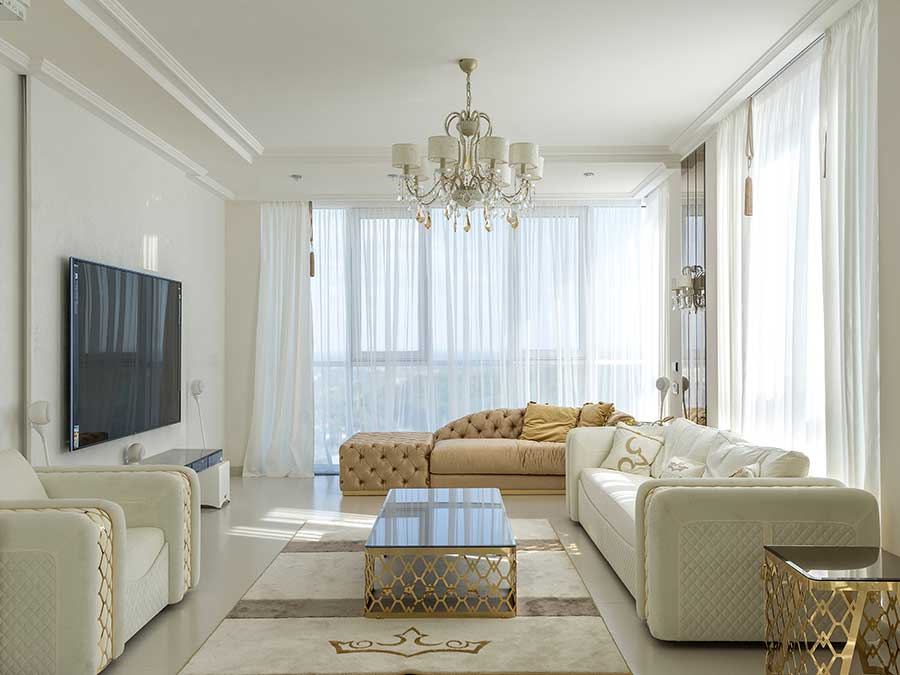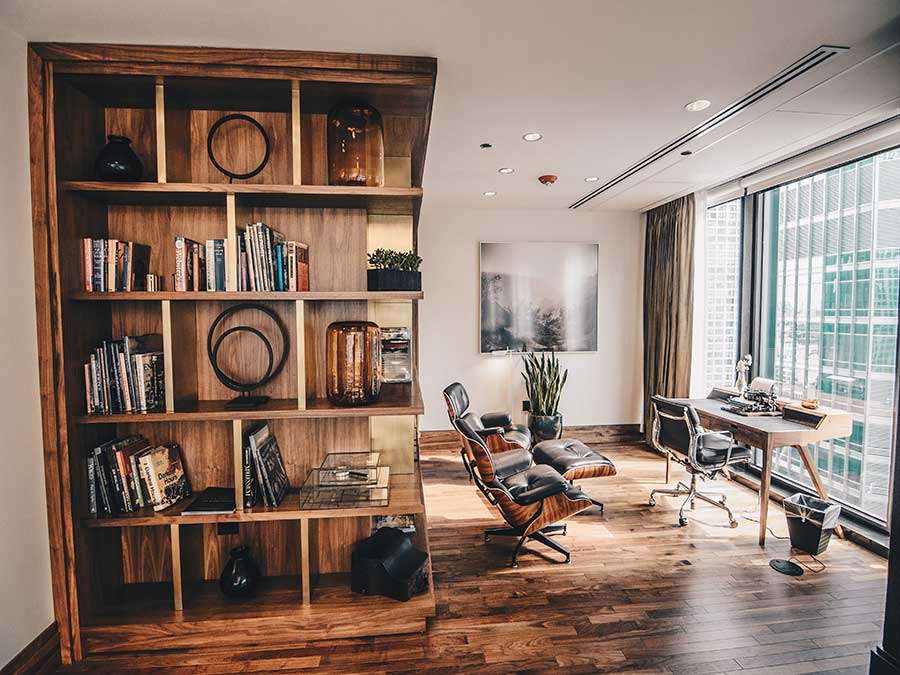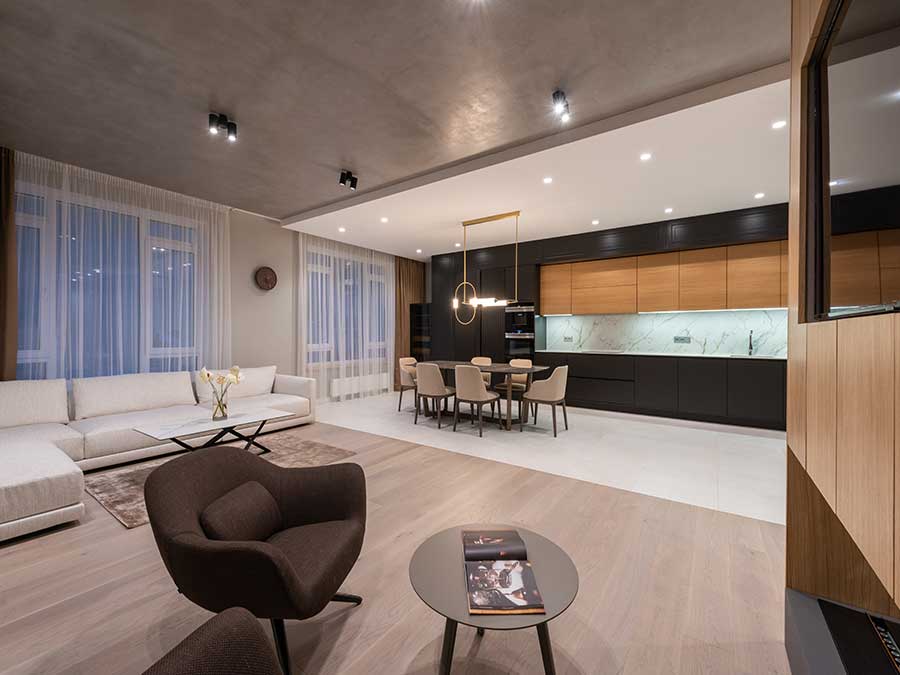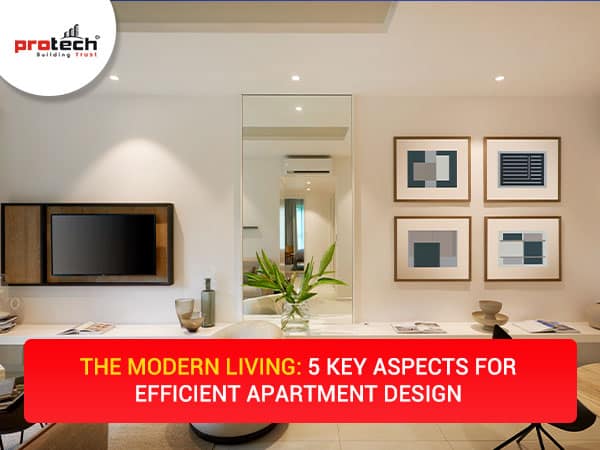Introduction
In the ever-evolving landscape of modern living, the concept of an ideal apartment has undergone a significant transformation. It’s no longer just about square footage; it’s about harmoniously integrating functionality, style, and adaptability. At the heart of this transformation is the art of efficient space utilization, characterized by careful planning and multifunctional designs. Protech exemplifies this innovative approach of modern living by incorporating smart technology and prioritizing natural light to create environments that enhance both productivity and well-being.
In today’s fast-paced world, the traditional notions of the ideal apartment size and layout have given way to a new focus on creating living spaces that seamlessly blend functionality, style, and practicality. Modern living apartment dwellers seek homes that not only optimize efficiency but also adapt to the ever-changing demands of contemporary lifestyles. Whether through open-concept designs that foster social interaction or flexible layouts accommodating remote work needs, the perfect apartment size and layout combine innovation with comfort. Within this dynamic context, the key lies in maximizing space utilization, integrating smart technology, and nurturing a sense of openness.
1. Efficient space utilization:
Efficient space utilization is a fundamental principle in contemporary design and architecture, with the primary objective of maximizing functionality and productivity within a given space. This concept goes beyond mere physical arrangements; it embodies a strategic and thoughtful approach that involves meticulous planning, multifunctional designs, and flexibility. By incorporating these elements, spaces are optimized to precisely align with the specific needs of their occupants.
At its core, efficient space utilization revolves around strategic organization. This process involves a detailed analysis of available space and a deep understanding of the requirements of the people who will use it. By identifying these needs, unnecessary areas can be minimized, and the layout can be tailored to enhance efficiency and improve the overall well-being of those within the understanding of modern living.
A crucial aspect of efficient space utilization is multifunctional design. Spaces are no longer restricted to singular purposes; they are now designed to serve multiple functions. Protech strives to bring out the versatility that eliminates the need for separate rooms or areas for each task, creating a dynamic environment where various activities can coexist seamlessly. Flexibility is another essential component. Spaces should be easily adaptable to changing requirements, with furniture and equipment arranged efficiently to enhance both comfort and productivity for the occupants. Regular evaluations are crucial to the concept of efficient space utilization. These periodic assessments enable the identification of unused areas and facilitate necessary adjustments, ensuring that the space remains optimized over time. This ongoing process is particularly important in maintaining a functional and efficient modern living environment, especially in dynamic workspaces where needs can evolve rapidly.
2. Integration of technology:
In the digital age, the integration of technology is essential for optimizing space usage. Smart systems and automation play a vital role in enhancing productivity and resource utilization within a given space. Efficient energy management systems, for instance, regulate lighting and climate control, ensuring responsible resource use.
The integration of technology not only simplifies processes but also enhances the adaptability of spaces. Sensor-based systems can adjust lighting and temperature settings based on occupancy, reducing energy consumption when spaces are unoccupied. These technological solutions make spaces more responsive and efficient, aligning perfectly with the evolving demands of modern living work environments.
3. Emphasizing natural light:

Prioritizing natural light is a critical consideration in contemporary space planning. Thoughtful placement of windows, glass partitions, and reflective surfaces maximizes the inflow of daylight, creating a well-lit and inviting environment. Beyond the economic benefits of reduced reliance on artificial lighting, natural light significantly influences the well-being and productivity of occupants.
Research has shown that exposure to natural light enhances mood and boosts productivity. It regulates the body’s internal clock, improving sleep patterns and overall health. Moreover, natural light fosters a connection with the external environment, creating a sense of openness and reducing feelings of confinement. In essence, natural light is not merely a design choice; it is a fundamental element that enhances the overall quality of the space and the experience of its occupants.
4. Balanced privacy:

Achieving a balance between open collaborative spaces and private enclosed areas is essential in creating a work environment where individuals can focus on tasks, participate in meetings, or engage in personal activities without feeling isolated from the collaborative atmosphere. By providing dedicated spaces for specific tasks, residents can choose the most suitable environment, thereby enhancing both collaboration and individual productivity. Achieving balanced privacy involves creating enclosed spaces like bedrooms and private study areas for individual use, allowing residents to work and relax without disturbances. Simultaneously, it incorporates open areas like living rooms and kitchens, promoting social interaction and collaboration among modern living apartment residents.
5. Open floor plans:

Open floor plans in apartments have gained popularity in contemporary architecture and interior design. This design approach eliminates traditional interior walls, promoting a seamless flow between different areas within the apartment. In an open floor plan, the living room, dining area, and the kitchen often merge into one expansive space without barriers or separating walls. This is the main interior layout in Protech apartments.
A key advantage of open floor plans in Protech apartments lies in the sense of openness and spacious areas they offer to their customers. The layout promotes improved communication and interactions among family members or guests, enhancing the way people connect and live together. The concept of an open floor plan is unique and modern living, but it requires extensive design to maintain a balance and deliver its functions and benefits in creating a welcoming and sociable atmosphere within the apartments.
Conclusion:
In conclusion, efficient space utilization represents a modern living multifaceted approach that combines meticulous planning, seamless technological integration, emphasis on natural light, balanced privacy, and thoughtful design of open floor plans. Protech embraces these principles in creating spaces that can transform the dynamics of environments, enhancing productivity, and promoting the well-being of their residents.
About Protech Group
We at Protech always attempt to deliver the best properties to you with our great efforts and innovative ideas to build the ideal apartments with the best comfort and luxury in your own Guwahati city. Protech Group, with over 18 years of experience, comes with the new project of Protech Pride which is located in Bagharbari in Guwahati. To get your dream home with all the smart amenities you can reach out to us at Protech Group. To know more about us, you can click here.

